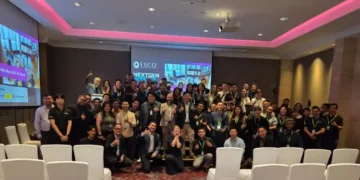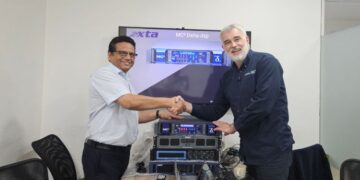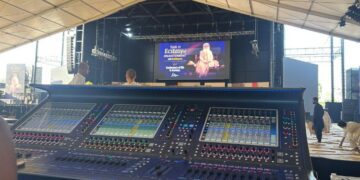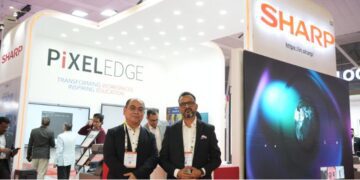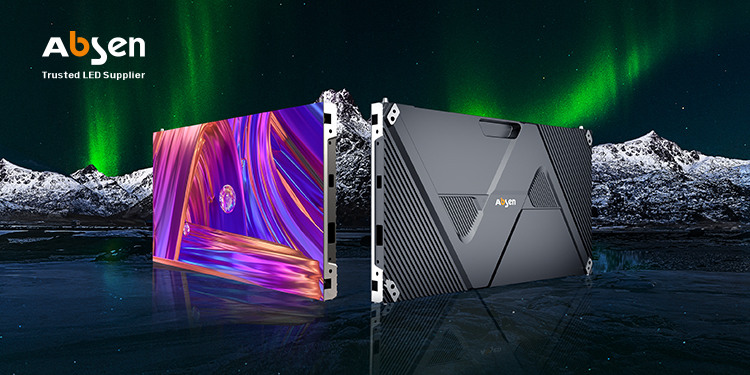Recently, the LED display industry has been transitioning from small pitches to micro pitches and panel types. The advent of Mini/Micro LED technology has facilitated LED displays’ penetration into the consumer market. Meanwhile, as China advances its carbon peaking and carbon neutrality goals (Dual Carbon Goals), LED displays, recognized for their significant electricity consumption, are attracting increasing scrutiny. LED display panels, renowned for their exceptional brightness, seamless splicing, and durability, are extensively utilized in control rooms, exhibitions, high-end commercial displays, and various other settings. As LED technology surpasses LCD in popularity, consumers are increasingly prioritizing the power consumption of LED displays. Significant reductions in power consumption can be achieved by harnessing the potential of Mini/Micro LED technology and pioneering energy-conserving strategies. What are the key factors influencing the power consumption of Mini/Micro LED technology? Let’s delve further into this topic.
1. Mini/Micro LED with Flip-Chip Technology
It’s common knowledge that flip-chip LED displays boast a simpler structure, smaller footprint, enhanced luminous efficiency, and superior heat dissipation when compared to conventional face-up LED displays. Unimpeded by wire connections, flip-chip LED chips emit light from all five sides, resulting in enhanced luminous efficiency. Additionally, flip-chip LED displays consume less energy than traditional LED counterparts at comparable brightness levels.
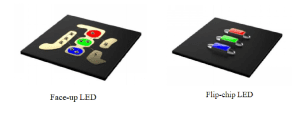
In addition to energy conservation, the compact chip size of flip-chip LED displays also delivers exceptional contrast ratio and stability. With only 6 solder joints, flip-chip LEDs outperform face-up chips, typically equipped with 10 solder joints, representing a 40% reduction in solder joints. Furthermore, the closer solder joint spacing in face-up chips increases the risk of metal migration and chip failure, making them less stable when compared to the flip-chip solution.
2. Surface Encapsulation Layer
The emergence of Mini/Micro LED technology has facilitated the modularization of small-pixel pitch displays. These displays are equipped with a protective surface layer, and the material selected for this coating significantly impacts power consumption. Essentially, a surface layer with higher transmittance results in less luminescence loss from the LED chip, leading to reduced power consumption under identical settings. However, achieving optimal transmittance poses a challenge in achieving a superior contrast ratio. Darkening the surface to enhance the contrast ratio may diminish transmittance, thereby impacting power consumption. Therefore, it is crucial to strike a balance between transmittance and contrast ratio. Certain methods leverage bottom-fill technology to preserve black uniformity and a high contrast ratio. Additionally, they incorporate a transparent encapsulation layer to achieve low power consumption without compromising on contrast ratio. However, maintaining black uniformity can be a challenging task. Mini/Micro LEDs utilize black polymer material coatings and composite encapsulant to reduce power consumption while still guaranteeing black uniformity and high contrast ratio.
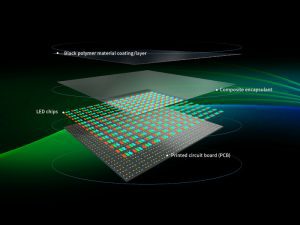
3. Common Cathode Technology
The common anode technology involves connecting the positive terminal of an LED diode and driving it with the negative terminal. In contrast, the common cathode technology connects the negative terminal of the LED diode and drives it with the positive terminal. An LED pixel consists of red, green, and blue chips with separate supply voltage (3.8V for the blue and green LEDs, 2.8V for the red LED). In conventional solutions, external resistors are commonly incorporated on the driving end of the red LED to regulate the voltage and ensure unified power voltage, with any surplus power dissipated as heat. While the common cathode technology separates and precisely powers the red, green, and blue chips based on actual needs. This approach effectively diminishes energy consumption and minimizes heat generation by the screen. Based on available data, LED displays employing common cathode technology can reduce energy consumption by 10% to 20% compared to conventional products operating under similar conditions. The driver IC and power supply in common cathode mode differ from those in regular products, which limits the available choices. Collaboration within the industry is critical for the widespread acceptance of this technology. Additionally, addressing patent concerns associated with the technology is equally important.

4. Energy-Efficient Driver IC
The LED driver IC plays a pivotal role in the display, influencing its visual performance and power consumption. As pixel pitch decreases, the number of driver ICs increases exponentially. For pixel pitches below 1 mm, there is a significant spike in driver IC power consumption, highlighting the importance of selecting energy-efficient driver ICs.
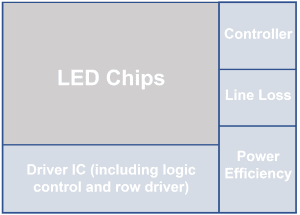
a. The low dropout voltage driving technology guarantees stable LED chip operation at a reduced dropout voltage, thereby reducing the overall system power supply voltage and decreasing the power consumption of LED chips and driver IC.
b. Dynamic energy-saving technology in driver ICs efficiently reduces display power consumption. Traditional driver ICs maintain open output channels when a black screen is displayed, resulting in unnecessary energy usage. However, driver ICs equipped with dynamic energy-saving technology can adjust output power based on-screen content, resulting in significant energy savings.
c. The transition to Mini/Micro LED fine-pitch displays demands highly integrated driving solutions. Utilizing multi-channel row-column integration and advanced driver ICs can significantly reduce power consumption.
5. High-Conversion-Efficiency Power Supply
The LED power supply, as an important part of the display, can convert AC voltage (220/110 V) to DC voltage (2.8 – 5 V) acceptable for LED chips. Its quality directly impacts the LED display’s power consumption. Utilizing supplies with high conversion efficiency and PFC functionality can reduce display power consumption. Through the integration of LLC and dual-switch forward circuits, the power supply achieves a reduction in DC output power by delivering voltage separately to red, green, and blue chips, thus improving energy efficiency and savings.

a. Power conversion efficiency: Power conversion efficiency refers to the efficiency of power utilization by the power supply. A higher conversion efficiency results in less waste heat generation. In addition to the power supply’s conversion efficiency, the rate at which the product utilizes the power supply also significantly impacts its overall efficiency. A well-matched load can effectively minimize unnecessary strain on the power supply.
b. Power Factor Correction (PFC): Power Factor Correction (PFC) is a technology designed to improve the power factor of electrical devices, thereby enhancing power utilization efficiency. The power factor, typically denoted by cosΦ and ranging from 0 to 1, indicates the efficiency of power utilization, where a higher power factor denotes greater efficiency.
6. Power-Saving Standby Mode
Reducing energy consumption requires careful consideration of both innovative hardware design and the practical application of the product in real-world scenarios. In settings like meeting rooms, exhibitions, and high-end commercial displays, the screen may appear black while still being on, highlighting the necessity for LED displays to incorporate a low-power standby mode. In standby mode, older models may display a black screen while the LED modules remain operational, resulting in heat generation on the screen surface. The new-gen standby mode automatically shuts down the modules or panels when the screen is not in use, thereby lowering LED energy costs.

Several factors influence the power consumption of LED displays. Mini/Micro LED displays utilizing flip-chip technology consume over 40% less energy than conventional products under similar conditions, resulting in reduced heat generation and an enhanced user experience. LED displays have become ubiquitous in today’s world, and manufacturers have placed a strong emphasis on enhancing energy efficiency and minimizing emissions in their products. Moving forward, advancing energy efficiency and decreasing power consumption will remain pivotal areas of focus for the continual evolution of LED display technology.

